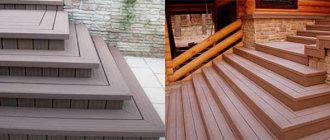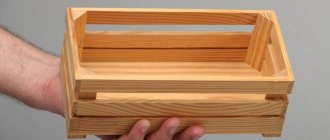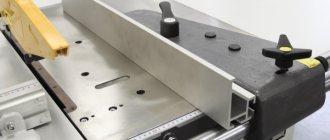Very often, when doing electrical installation work, it is impossible to do without a vacuum cleaner.
This is primarily due to the processes of wall gating. You cannot use homemade household models for this task, otherwise you will ruin them on the very first day of work. Their dust collectors will fill up very quickly, and the vacuum cleaner itself will overheat.
Only professional craftsmen who earn a daily living from this type of activity can afford to buy a construction equipment, which costs quite a lot of money.
But what if you are not a builder and you only need such a device to complete electrical repairs in your apartment? In this case, there is only one optimal solution - to make a construction vacuum cleaner yourself from an ordinary one.
Moreover, such a change will only take you a few minutes. And the materials that are required for this can be easily found in the pantry, or purchased in addition at the nearest plumbing store.
Let's take a closer look at two very similar methods, which nevertheless have structural differences between each other.
What is the difference between a construction vacuum cleaner and a regular one?
Conventional household models cannot serve as an alternative to industrial ones. To make a construction vacuum cleaner with your own hands, you need to heavily rework the device. Otherwise, there is a risk of constant oversaturation of the dust collector. In addition, the device will quickly break down.
Note! For normal operation of the product, you need to use components that create a significant vacuum at the input. The vacuum device is driven by a powerful motor.
Stages of work
Household vacuum cleaner
Many people do not understand how to assemble a vacuum cleaner from a household model. In fact, almost any modification with a power of 300 kW or more will do. A cyclone type device is selected. The most commonly used products are Samsung and Bosch. Before starting work, you need to make sure the strength of the camera and understand the design.
Advice! The container should be easy to remove, the number of filters should be taken into account.
It is possible to create a vacuum cleaner for a garage with your own hands without a casing, since the noise level does not matter. When considering installations for a private workshop, it is worth taking care of protecting the hearing organ. When considering household vacuum cleaner models, the motor is the weak point.
In terms of speed parameters and maximum voltage, they are incomparable with construction analogues. There is also another problem associated with element contamination. To collect concrete dust, you will have to insulate the vacuum cleaner components.
Design Features
Homemade construction vacuum cleaners are characterized by certain design features.
Construction vacuum cleaner with water filter
The principle of operation of a device with a water filter is that the air flow with dust moves in a spiral and touches the surface of the water. Thus, the system additionally humidifies the air. Due to this, the dust becomes heavier and settles into the water.
A vacuum cleaner with an aqua filter can also be replaced by an ordinary household bucket, to which you need to attach the appropriate attachments. A barrel of suitable size is also suitable for this purpose.
Homemade chip sucker
This device helps to collect shavings that are constantly lying under your feet. To achieve a good result, you need to take a motor with a long shaft and a sheet of plywood. The motor must be powerful enough and have a speed of up to 3000.
Plywood is used to make an impeller, which is similar to a water mill. To avoid beating, it must be properly balanced.
To assemble the device, you must do the following:
- install the side of the case;
- place the impeller on the shaft;
- mount the top;
- install the second side panel.
Note! An additional container is required to collect chips. An ordinary box or bag is suitable for this.
Construction vacuum cleaner for cement dust
How to make a vacuum cleaner to collect construction waste? To collect cement dust, you need to use several high-quality filters. The fact is that it is extremely difficult to retain small fragments. In addition, they easily absorb moisture, acquiring a sticky consistency.
To make a high-quality device, you need to combine water and cyclone types in one. Sometimes a vacuum cleaner is added to a wall chaser.
In any case, the device must include the following:
- plastic cone;
- capacity;
- household vacuum cleaner.
Important! A synthetic mesh must be placed on the surface of the water layer. It will prevent liquid from spilling during operation of the device.
The device can be used to collect cement dust
Garden device
People with their own gardens periodically have to remove leaves and other debris. Garden devices are used for this. It's easy to make them yourself.
It is recommended to use an old Soviet vacuum cleaner as a basis. You need to install a plastic container in it and connect a wide corrugation, which has a dense piece of pipe at the other end.
It is noteworthy that among compatriots it is not customary to collect leaves with a vacuum cleaner. However, those who have already tried this option are completely delighted. With the help of a simple device, the speed of cleaning in the garden increases significantly.
You can make an effective device for the garden
Making a cyclone filter
Creating a homemade chip sucker consists of a number of stages:
- Creating a retaining ring and a shaped insert
- Installing the Retaining Ring
- Installing the side pipe
- Top entry installation
- Installing a shaped insert
- Cyclone filter assembly
Creating a retaining ring and a shaped insert
It is necessary to cut off the side of a small bucket, which is used to attach the lid. The result should be a cylinder like this (well, slightly conical).
We make markings - place a small bucket on the plywood and draw a line along the edge - we get a circle.
Then we determine the center of this circle (see school geometry course) and mark another circle, the radius of which is 30 mm larger than the existing one. Then we mark the ring and the shaped insert, as shown in the figure.
It is better to do the markings precisely or, in the worst case, “by eye”.
We cut out the resulting parts with a jigsaw.
As a result, you should get two blanks - a fixing ring and a shaped insert.
Installing the Retaining Ring
We fix the ring on the edge of a small bucket so that we get a side. We fasten using self-tapping screws. It is advisable to pre-drill the holes to avoid splitting the plywood.
We mark the roof of a large bucket. To mark, you need to place the bucket itself on the lid of a large bucket and trace its outline. It is better to make markings with a felt-tip pen, as the mark is clearly visible.
And cut it out with a knife.
We install the cut out lid on the side of the small bucket and fix it with self-tapping screws.
It is important to note that all connections must be airtight; therefore, before installing the cover, the connection area must be coated with sealant. You also need to coat the junction of the wooden ring and the small bucket.
Installing the side pipe
The side pipe is made from a sewer outlet of 30 degrees (or 45 degrees). To install it, you need to drill a hole in the top of the small bucket with a crown. Notice that the top of the small bucket has now become its bottom.
After the hole is drilled, you need to use a knife to give it a teardrop shape for a tighter fit of the pipe.
We place the pipe on the sealant and fix it with a self-tapping screw.
Top entry installation
To make the upper input, you need to drill a hole in the upper part of the chip sucker (small bucket), that is, in the center of the former bottom.
To firmly fix the inlet pipe, you need to use an additional element of strength in the form of a square piece of plywood 20 mm thick with a central hole for the pipe of 50 mm.
This workpiece is fastened from below with four self-tapping screws. Before installation, the joint must be coated with sealant to ensure a tight seal.
We install the upper pipe without additional fastening - simply with sealant.
Installing a shaped insert
The shaped insert is a very important component of a homemade chip cleaner; it must be secured inside the cyclone filter, as shown in the photo.
Fastening is done using self-tapping screws through the outer wall of the cyclone.
Cyclone filter assembly
Assembly is extremely simple - the resulting structure just needs to be placed on a large bucket. The final height of the product is 520 mm.
Then you need to connect the air ducts correctly:
- Upper pipe – to a household vacuum cleaner
- An angled outlet that enters from the side at an angle to the hose.
The homemade cyclone vacuum cleaner (chip cleaner) is ready.
Process of creation
Making homemade products depends on the available materials and tasks. In this case, different schemes can be used.
From improvised means
First of all, you need to make holes in the central part of the bucket lid and near the edge. Then you need to insert a tube into the center. However, first its edges must be processed with a file or sandpaper. This will help strengthen the adhesion of the surfaces. You should also prepare the lid. Then you need to lay the tube and apply glue.
When using a powerful vacuum cleaner, you should not use a plastic bucket, but a steel tank of a similar shape. Thanks to this, you don’t have to worry about the product being crushed.
From a household vacuum cleaner
Many craftsmen are interested in how to turn a regular vacuum cleaner into a construction one. To improve the properties of the device, you need to unscrew the wheels from it. Similar actions must be performed with the nameplate.
After removing all rivets and latches, you need to install the plug. To increase its reliability, it is necessary to wrap electrical tape and make a hole in the bottom. Its internal cross-section should be 3-4 cm. To seal the structure, you can use gaskets. You need to install a lid and a pipe in the waste container.
The cover must be secured with self-tapping screws. Then you can move on to working with the suction pipe. The hole into which it will be attached must be cut with metal scissors. Self-tapping screws can be used for fixation. To increase the tightness of the connection, gauze or a pharmaceutical bandage is suitable. Before winding, they should be soaked in glue.
An effective device can be made from a household vacuum cleaner
Homemade cyclone from a household vacuum cleaner
The first method has been presented on the Internet and on YouTube for quite some time. You can easily find many videos with similar homemade cyclones.
However, they raise quite natural questions and skepticism among professional builders. Therefore, it should be noted right away that they are mostly suitable for removing wood chips.
But it is better not to work with cement dust with such devices. The second option is more tailored to it.
The main “trick” that will allow you to easily suck in kilograms of garbage, wood, and metal filings and not worry about frequently changing filter bags is a homemade “separator”.
It will then need to be constructed from several components. For the entire assembly you will need:
- regular vacuum cleaner
- thick plastic bucket with lid
A bucket of Shitrok putty is best suited here. It is harder to flatten it with a vacuum.
- plastic sewer pipe d-40mm
- polypropylene sewer outlet at 90 degrees with a diameter of 40mm
- 40mm crown or utility knife
First of all, drill or carefully cut a through hole for the tube in the center of the bucket lid.
Mark the third hole closer to the edges of the cover, where the stiffener is.
If you do not have a special crown, then first pierce the intended circle with an awl and carefully cut it with a stationery knife.
The edges will be uneven, but they can be processed with a round file.
Two sewer outlets are inserted into these holes. So that they hold securely and there is no additional air leakage, it is better to glue them.
To do this, first sand the edges of the tube with sandpaper or a file to create a rough surface.
Do the same operation with the lid.
After this, insert the tube into the inside of the cap and apply a thick layer of glue with a hot-melt gun.
Don't skimp on glue. This will help create a good seal in these places and tightly close all the cracks.
There is actually another option in which you can do without glue and fan pipes altogether. To do this, purchase rubber adapter couplings from Leroy Merlin.
They come in different diameters. Select according to the size of your hose.
For example, a tube from a 35mm hose is tightly inserted into a 40/32 coupling. But in a 40mm pipe it will dangle. We'll have to reel in something and collective farm.
On the tube that is located on the edge of the lid, place the sewer outlet at 90 degrees.
At this point, the separator design can be said to be almost ready. Install the lid with outlets on the bucket.
The air intake hose from the vacuum cleaner is inserted into the central hole.
And the piece that you will use to collect all the debris and dust is stuck into the corner joint.
It is desirable that the tubes contain sealing rings that match the size of the corrugated hoses of the vacuum cleaner.
This completes the entire assembly. You can plug in the vacuum cleaner and use it.
Here is a visual video of the inside of a bucket of a similar design. It clearly shows how sawdust is sucked into the separator, but cannot escape from it and get into the vacuum cleaner.
The operating principle here is as follows. Coarse dust sucked into the container falls to the bottom of the container. At the same time, it does not enter the area where air is pumped directly.
Three factors help in this matter:
- gravity
- friction
- centrifugal force
They then make the garbage rotate inside the bucket, pressing against its walls, and then fall to the bottom. And only the fine fraction goes directly into the dust collector of the vacuum cleaner.
Typically, such a cyclone in factory designs has the shape of a cone, but cylindrical specimens also often cope well with this task.
True, the higher the bucket, the better the installation will work. Much here depends on the correct combination of the design of the container and the power of the vacuum cleaner. Here is a sign from Chinese cyclones on the correct selection of hose diameter and unit power.
In cylindrical buckets, the tangential air flow enters not through the curved side wall, but through the flat lid. Assembling such a device is much easier.
Also, if you have several buckets, you can use them alternately. Just remove the lid from one and move it to the other. Moreover, this is even easier to do than in bulky cyclones.
Then, at the very end of the work, simply take out the filled containers at once. This is a great time saver.
If you have a powerful vacuum cleaner, instead of a plastic bucket for emulsion paint, it is better to use a metal tank of the same shape. Otherwise, the bucket will collapse and flatten it.
The power regulator helps in this matter. If, of course, it is present in your model.
The effectiveness of homemade compared to store-bought analogues
Homemade devices cannot be compared with professional ones. They differ in the following parameters:
- motor and suction power;
- noise parameters;
- volume of waste collection container;
- air purification;
- additional functions;
- hull strength.
At the same time, a simple homemade vacuum cleaner will easily clean the room from small shavings and construction dust. Home devices are smaller in size. They help free the floor and walls from dust. However, they do not have an air purification function.
The manufacture of a construction vacuum cleaner has a number of features. To get a high-quality and reliable design, you should think it through to the smallest detail and prepare everything you need.
Tools and materials
Tool kit
Many DIYers don’t know how to make a vacuum cleaner. The work begins with the selection of tools and materials. Much depends on the type of design chosen and the workpiece layout. If we consider a cyclone type vacuum cleaner, the following tools are used:
- filter - 1 piece;
- bucket;
- metal corners;
- long flexible hose (suitable from the pool);
- household vacuum cleaner.
To process materials, a stationery knife, ruler, drill, pliers, a set of screwdrivers, and wire cutters are prepared.
Safety precautions
When making your own device, you can purchase factory-type parts and spare parts to save time and effort. But when installing filters, it should be taken into account that HEPA filters are not suitable for a homemade device, since such products can trap small dust particles in the pores of the filter itself. All this leads to the filling of filters with debris, and, consequently, the suction power will gradually decrease. The filter will be impossible to clean, since it will be difficult to blow out the dust, and when washed off, a rotting process may occur. Bacteria can also develop and cause an unpleasant odor during operation.
Advice from professionals
The process of creating a homemade construction vacuum cleaner, as can already be seen, is relatively simple. But there are some subtleties that you need to know. So, when installing an air purifier on an angle grinder, you need to use a casing. To make it, use an aluminum pan or a suitable plastic product. It is only important to properly calculate the depth of immersion of the cutting disc into the material being processed.
A slightly different approach is needed when preparing a homemade vacuum cleaner for a CNC woodworking machine. Since a lot of sawdust is generated, a capacious barrel (from 100 liters) is required. If there is no ready-made barrel with suitable dimensions, simply make a plywood frame filled with cellular polycarbonate. The separator body is made up of rings cut with a milling compass. Important: the rings must be made of plywood, not fiberboard.
Sources
- https://stroy-podskazka.ru/pylesosy/stroitelnye/svoimi-rukami/
- https://ChistyjDom.ru/pylesos/samodelki/delaem-stroitelnyj-pylesos-svoimi-rukami/
- https://domikelectrica.ru/2-sposoba-kak-sdelat-stroitelnyj-pylesos/
- https://kliningovyj-raj.ru/tehnika-i-sredstva/pylesos-svoimi-rukami/
- https://PyleSOS.tech/promyslennyj-pylesos-svoimi-rukami.html
- https://stroy-podskazka.ru/pylesosy/svoimi-rukami/











